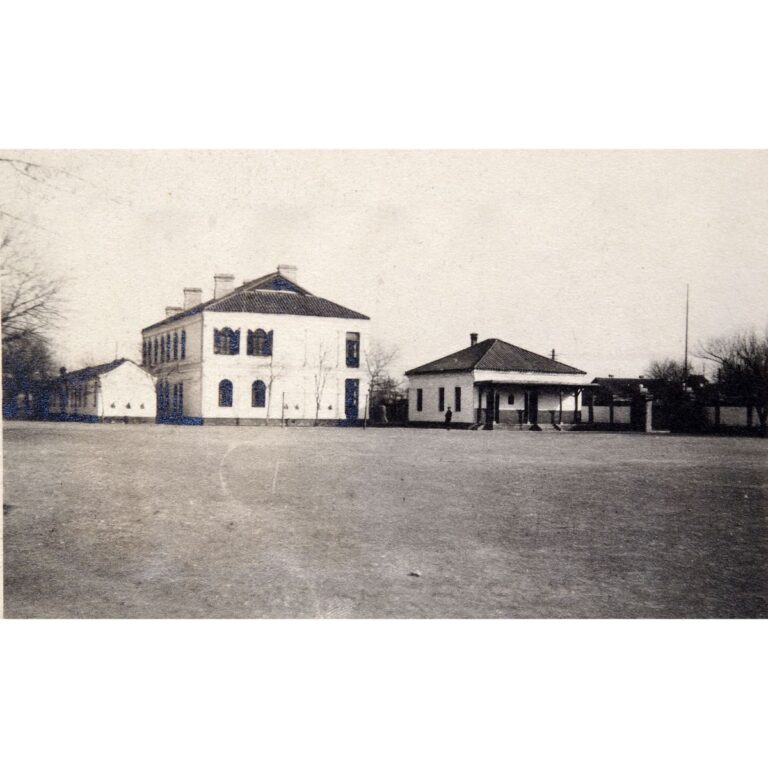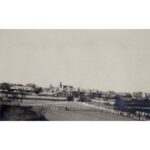Photography Officer’s house and guard of the Austro-Hungarian Legation
A black-and-white photograph showing the officers’ house and guardhouse of the Viennese legation in the Legation Quarter in Beijing (Dongjiaominxiang 東交民巷), situated between 1861 and 1959 in the area of the Inner City (Neicheng 内城), east of present-day Tiananmen Square (Tiananmen Guangchang 天安門廣場), and south of the Forbidden City (Gugong 故宫 or Zijincheng 紫禁城). After the Second Opium War (1856-1860), several foreign delegations settled there and established legations of their countries. The city attracted many diplomats, soldiers, scholars, artists, tourists, and Sinophiles.
In 1869, Austria-Hungary signed a trade agreement with the Beijing court that was unfavourable to China. Soon after, the Viennese court opened its representative office in Beijing in a small mansion, which was transformed into an embassy in 1896. The renovation of the embassy building, which was severely damaged during the Boxer Rebellion, was led by the Slovenian-born ... more
A black-and-white photograph showing the officers’ house and guardhouse of the Viennese legation in the Legation Quarter in Beijing (Dongjiaominxiang 東交民巷), situated between 1861 and 1959 in the area of the Inner City (Neicheng 内城), east of present-day Tiananmen Square (Tiananmen Guangchang 天安門廣場), and south of the Forbidden City (Gugong 故宫 or Zijincheng 紫禁城). After the Second Opium War (1856-1860), several foreign delegations settled there and established legations of their countries. The city attracted many diplomats, soldiers, scholars, artists, tourists, and Sinophiles.
In 1869, Austria-Hungary signed a trade agreement with the Beijing court that was unfavourable to China. Soon after, the Viennese court opened its representative office in Beijing in a small mansion, which was transformed into an embassy in 1896. The renovation of the embassy building, which was severely damaged during the Boxer Rebellion, was led by the Slovenian-born architect Ivan John Jager. Since Austria-Hungary was involved in the suppression of the Boxer Rebellion, it received so-called concessions in the city of Tianjin from China in 1902 for the damages suffered.
The photograph is the 16th of 449 photographs of Beijing and its surroundings in the album of Ivan Skušek Jr., purchased during his stay in Beijing (1914–1920). In the handwritten inventory of the album, the photograph is referred to as Oest. eng. Gesandtschaft: Offizier-Haus und Wache. (DZ)





































Do you have a comment or additional information about the subject?